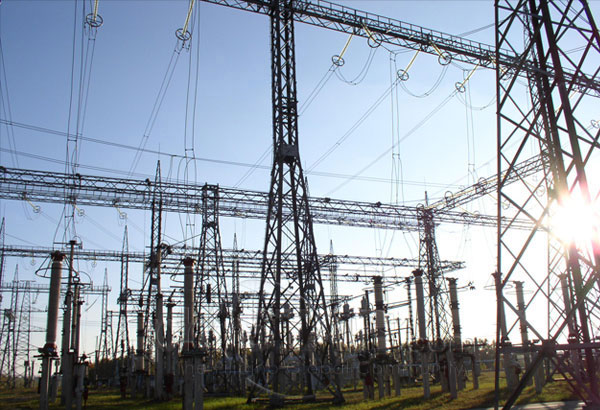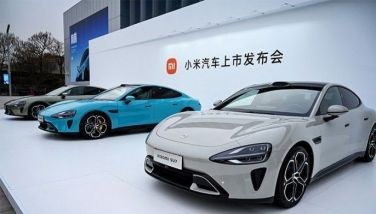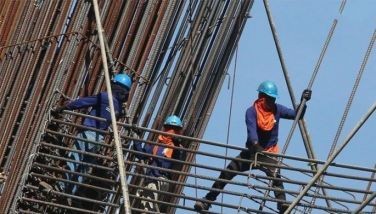Baby steps for CARS

Mitsubishi Motors just recently delivered the first Philippine-made car under the government’s program called CARS (for Comprehensive Automotive Resurgence Strategy), which aims to establish the country as a regional automotive manufacturing hub.
Manufactured in its Mitsubishi plant in Sta. Rosa, Laguna, the vehicle – a Mirage G4 – will have increasing local content through the next six years as a way of bolstering Filipino capability in producing car parts, and hopefully to be able to bring the dream closer to reality. At least, that’s the plan.
Even during the time of deposed president Ferdinand Marcos, the Philippine government had been dreaming of being a big player in the region’s automotive industry, of manufacturing hundreds of thousands of vehicles locally and exporting these to Asia and other parts of the world.
Remember the defunct Progressive Car Manufacturing Program (PCMP) during the ’80s? Liberal incentives were then extended to car manufacturers, but somewhere along the road, plans fizzled out as a result of external events and internal pressures.
On the other hand, Thailand mustered the right plan, and by the turn of the century, was already shipping out vehicles by the thousands from its plants.
For the Philippines, it looked like it had to give up on this dream. But as the local economy gathered strength during the term of former president Gloria Macapagal Arroyo in spite of a global economic downturn, and as more Filipinos realized they had more money to set aside for the purchase of a car, hope was rekindled.
Cautious CARS
Perhaps minding the painful lessons of the PCMP’s failure, former president Benigno Aquino III announced a plan to develop a “roadmap” for the automotive manufacturing sector that would provide incentives for the production of local vehicles, but on a more conservative level.
The original plan though was still not warmly received by the industry because of what it deemed were excessive demands: high investment levels and the unrealistic numbers of produced cars that must be maintained to qualify for incentives. Eventually, expectations were scaled down to what CARS now dictates.
Still, only two auto manufacturers signified their intention to join: Toyota, which has the undisputed number one position in unit sales in the country and accounts for about half of market share, and Mitsubishi which holds the second highest sales, but with a significantly lower market share.
For a while, Korea’s Hyundai, which was then a bullish player banking on its aggressive sales force, entertained thoughts of joining CARS. But with internal problems and other reasons that Isuzu, which had also relatively competitive sales figures matching Hyundai’s, had expressed, the Koreans decided not to participate.
Isuzu had been vocal about the seeming foolishness of the Philippine government to enter into a race that would be difficult to win. By this time, the ASEAN Economic Community was being formed, and Isuzu felt the impending opening of trade doors amongst ASEAN would make it harder for the Philippines to become an exporter of vehicles.
Other industry sources were also saying the Philippines was turning a blind eye to the market realities where countries around it like Thailand and Indonesia were manufacturing cars by the millions. Outside ASEAN, there were also stronger competitors, like the Chinese, Koreans, Japanese, and Indians.
Local market
For companies like Toyota and Mitsubishi, it made more sense to avail of the government incentives under CARS. In a bullish market where more Filipinos were buying cars, both companies were in a better position to fulfill their commitments to CARS.
Mitsubishi Philippines had even constructed a P2-billion big parts stamping plant in Laguna, the first in the country. Part of the objective for this was to bring local content of its Mirage under CARS to 35 percent, as well as to bring down production cost.
Obstacles for expansion
One reason why local automotive industry players were not keen on expanding their manufacturing operations in the Philippines even under CARS was the high cost of production and the inadequacy of local suppliers to deliver quality parts and supplies.
However, Mitsubishi was willing to bring in a total investment in CARS of P4.3 billion, one which would play a pivotal role in bringing the capability of local suppliers to higher quality levels assuming that small Filipino companies would be able to raise enough funding to upgrade their manufacturing facilities.
Local parts makers who will collaborate with Toyota and Mitsubishi under the CARS program are expected to infuse over P18 billion in added investments.
Toyota, on the other hand, has committed to spend P3.22 billion to produce 230,000 vehicles over the next six years in its Sta. Rosa plant in Laguna. It enrolled the Vios in the CARS program.
Increasing importation costs
Officials from the Department of Trade and Industry admit that it is a very competitive environment in the region as far as automotive manufacturing is concerned. But with the rising cost of importations on vehicles and parts, something had to be done.
From less than 200,000 vehicles sold in a year in the early 2000s, the country has now more than doubled this figure, and is likely to hit the 500,000 mark before the decade ends. This is a trend that economists believe will continue well into the future as the Philippine economy gets stronger.
The tax incentives to be given to Toyota and Mitsubishi, amounting to P18 billion, are expected be offset by expected revenues from import duties, and other taxes amounting to P408 billion. Likewise, the program would also enable direct purchases of raw materials for parts, equivalent to a savings of P63 billion.
Changing environment
As long as the country keeps its aspirations grounded on the realities of the marketplace, it can continue to take baby steps in nurturing its dream of becoming a regional hub — perhaps not in exporting vehicles like what Indonesia and Thailand are doing, but in other areas.
It is still too early to say where CARS will bring the country, its auto makers, and the fledgling industry that supports big companies like Toyota and Mitsubishi, but as long as it remains cautious moving forward, something good may come from it.
The global automotive manufacturing landscape is transforming, and many of the established car manufacturers are already talking about the risks they face should there be new technologies that will make them obsolete.
Perhaps, as the Philippines is just starting its journey, it would be in a better position to adapt to the changing times — when indeed this happens.
Facebook and Twitter
We are actively using two social networking websites to reach out more often and even interact with and engage our readers, friends and colleagues in the various areas of interest that I tackle in my column. Please like us at www.facebook.com and follow us at www.twitter.com/ReyGamboa.
Should you wish to share any insights, write me at Link Edge, 25th Floor, 139 Corporate Center, Valero Street, Salcedo Village, 1227 Makati City. Or e-mail me at [email protected]. For a compilation of previous articles, visit www.BizlinksPhilippines.net.
- Latest
- Trending































